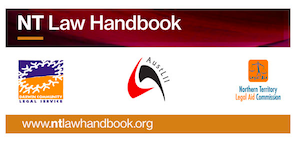-- JonathanMo - 14 Sep 2015
Subject matter other than literary and artistic works (CA Part IV)
Part IV of the CA introduces new subject matter for copyright protection, essentially in recognition of the broader nature of neighbouring rights. The purpose of these new categories is more to protect entrepreneurial investment, rather than authorship or creative endeavour, although performers have recently been given rights over their performers that had not previously existed. Part IV of the CA protects live performances, sound recordings, cinematograph films, television and sound broadcasts, and published editions of works. Sound recordings may be protected whether embodied in a video tape, cassette tape or some other form. Protection is not available for sound recordings made prior to the commencement of the Act, although copyright might be claimed in some aspect of the recording such as the literary work on which it is based [CA s.85]. The protection is only for the actual recording itself, and would not prevent 'sound alike' or cover versions. The copyright owner now possesses the right to enter into a commercial rental arrangement with respect to a sound recording [CA s.85(1)(d), (2)]. Copyright protection for films is a separate copyright from any underlying copyright in the script, choreography or score [CA ss.86, 90]. This is a relatively narrow type of copyright protection, covering only the film itself: it does not therefore cover copyright infringements of the type which occurred in Zeccola (the Jaws case). Video games involving computer generated images have been held to be cinematographic films for the purposes of this definition: see Galaxy Electronics Pty Ltd v Sega Enterprises Ltd (1997) 75 FCR 8; 145 ALR 21. Sound and television broadcasts, again, are a separate copyright [CA ss.87, 91]. Broadcasts made before the 1968 Act are not protected by copyright law. Before the Copyright Amendment (Digital Agenda) Act 2000, the definition of broadcasting included a concept of broadcasting to the public at large. There were therefore considerable difficulties with copyright for pay television, since it (like Sky Channel etc) was arguably only transmitted to a narrow range of subscribers and hence not to the public at large. There is now no distinction between free-to-air and cable services. A special category of protection exists for publishers who make particularly beautiful 'special editions' of works (particularly those on which copyright has expired) [CA ss.88, 92]. Copyright © by the contributing authors. All material on this collaboration platform is the property of the contributing authors.
Copyright © by the contributing authors. All material on this collaboration platform is the property of the contributing authors. Ideas, requests, problems regarding AustLII Communities? Send feedback
This website is using cookies. More info.
That's Fine

